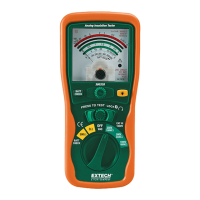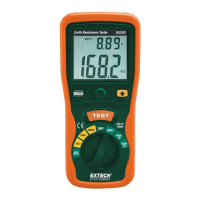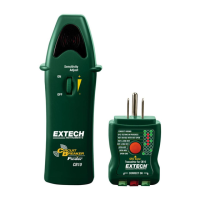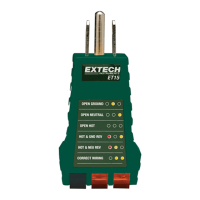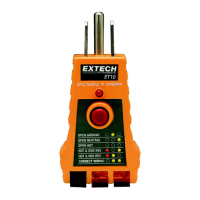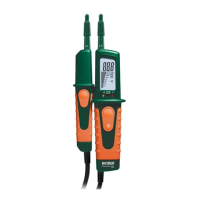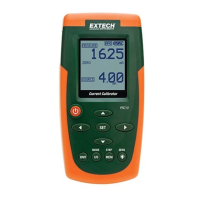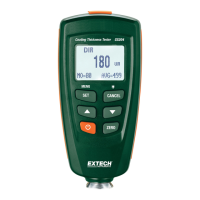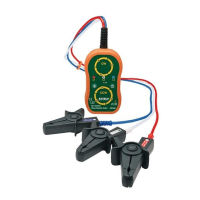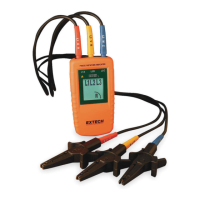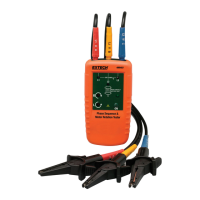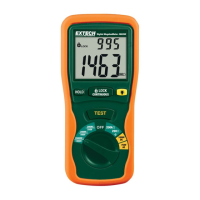
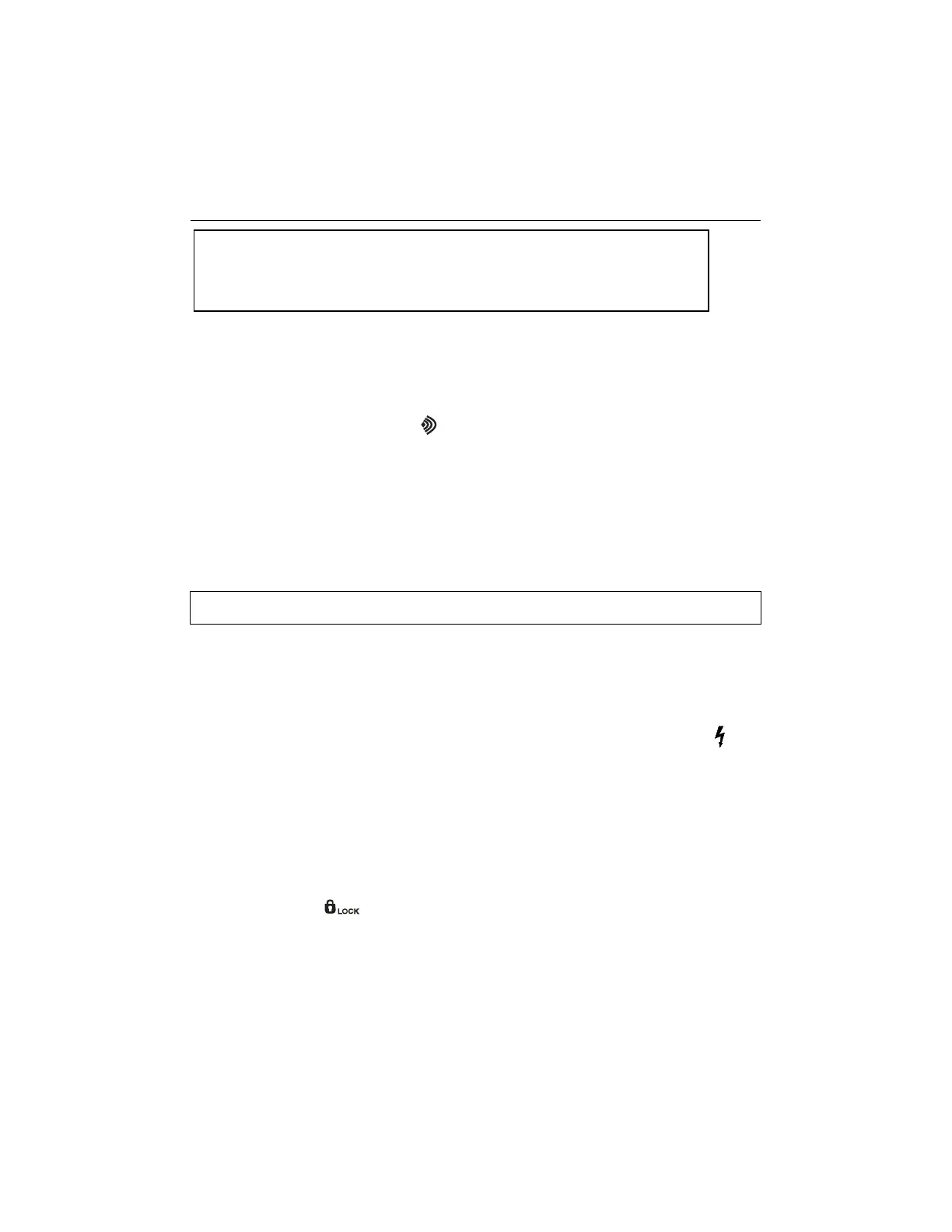
Do you have a question about the Extech Instruments 380260 and is the answer not in the manual?
| Model | 380260 |
|---|---|
| Category | Test Equipment |
| Frequency Response | 31.5Hz to 8kHz |
| Power Supply | 9V battery |
| Resolution | 0.1°F/°C |
| Weighting Networks | A |
| Time Weighting | Fast |
Congratulations on purchasing the Extech Insulation Tester/Megohmmeter Model 380260.
Essential safety guidelines for using the meter, including de-energizing circuits and avoiding contact with live conductors.
Explanation of symbols used on the meter, such as caution and dangerous voltage indicators.
Identifies the main components of the meter, including the LCD display, buttons, and rotary switch.
Instructions for connecting the red and black test leads to the correct input terminals.
Procedure to verify the integrity and functionality of the test leads before use.
Detailed steps for performing insulation resistance tests (Megohmmeter function).
Enables hands-free operation by locking the test function and providing audible feedback.
Important considerations and interpretations for insulation resistance (Megohmmeter) tests.
Procedure for measuring AC and DC voltages using the meter.
Instructions for measuring resistance, including a warning about AC voltage presence.
Procedure for checking continuity and low resistance values with audible indication.
Details the automatic power-off feature to conserve battery life.
Explains how to freeze the current reading on the display.
Instructions for activating the display backlight.
Guidance on how to test devices that use a line cord, including double-insulated tools.
Procedure for testing AC motors, including wiring connections and component checks.
Steps for testing DC motors, focusing on brush rigging, field coils, and armature.
Instructions for testing cable insulation resistance to ground and between conductors.
Detailed specifications for insulation resistance measurement ranges, accuracy, and terminal voltage.
Specifications for AC voltage measurement, including range, resolution, accuracy, and overload protection.
Specifications for DC voltage measurement, including range, resolution, accuracy, and overload protection.
Specifications for resistance measurement, including range, resolution, accuracy, and maximum open circuit voltage.
Comprehensive specifications covering display, sampling rate, fuse, dimensions, weight, and approvals.
Step-by-step instructions for replacing the meter's batteries when the low battery symbol appears.
Guidelines for cleaning the instrument case using a dry cloth, avoiding solvents or abrasives.
